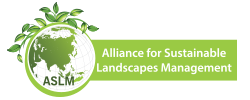MICRO WATERSHED ECOSYSTEMS CONSERVATION
August 15, 2018FOREST FIRE PREVENTION COMMUNITY AWARENESS PROGRAM
August 15, 2018
News Feed
ENERGY EFFICIENCY WORKSHOP
Ethical Tea Partnership (ETP) and the German Corporation for International Cooperation (GIZ) have been supporting a scouting energy saving study for the Asian tea sector in the last few months, sponsoring eight energy audits in four different countries, Sri Lanka, China, India and Indonesia and collecting secondary data at national levels. The objective was to explore how energy efficient or not is the tea sector in Asia in general and in those four countries in particular for designing further supporting program to help the Asian tea industry improve its energy efficiency in the coming few years, both at factory level and at country level. So far, the results have been very promising as much potential has shown up through those already conducted energy audits and through the analysis of secondary data at national level. Indeed, each factory can save on average 35% of the total energy that they are using, whether it is electrical or thermal, with some factories being able to save up to 45%, with the corresponding financial savings. On the electrical side, the following items, among others, have shown the most potential: - Installation of variable speed drives on withering fans, on induced draft fans of boilers and air heaters, cooling towers - Downsizing of motors when they are obviously under loaded (rotorvane, CTC machines) - Use energy efficient fans in the withering process instead of conventional fans - Use of energy efficient mechanical transmission (V-belts, chains) - Fix air leaks on compressed air piping networks - Replacement of piston air compressors by screw air compressors (color sorting machines, vibrating sifting) - Installation of capacitor banks to tackle low power factors on the electrical distribution at factory level - Training of operators to run the equipment with the best efficiency and to be able to spot energy saving potential in the factories - Use of LED lighting instead of fluorescent lighting On the thermal side, the following items, among others, have shown the most potential: - Improvement of thermal insulation of boilers, air heaters, steam and hot air piping networks - Fixing/replacing of damaged steam traps - Heat recovery on fumes of boilers and air heaters and on dryers’ exhaust air for preheating air intake - Protection of solid fuels (wood, coal) from rain/humidity to improve dryness and thus combustion efficiency - Recycling of condensates in boilers - Improvement of cleaning and maintenance procedures of boilers and air heaters - Fixing steam leaks on steam piping network and hot air leaks on hot air distribution ducting At national levels, potential savings is showing through implementation of regulation and pilot programs to help the tea industry with their energy efficiency. This conference will explore this energy saving potential for tea factories through practical examples and measures to take at both ground and industry level.


